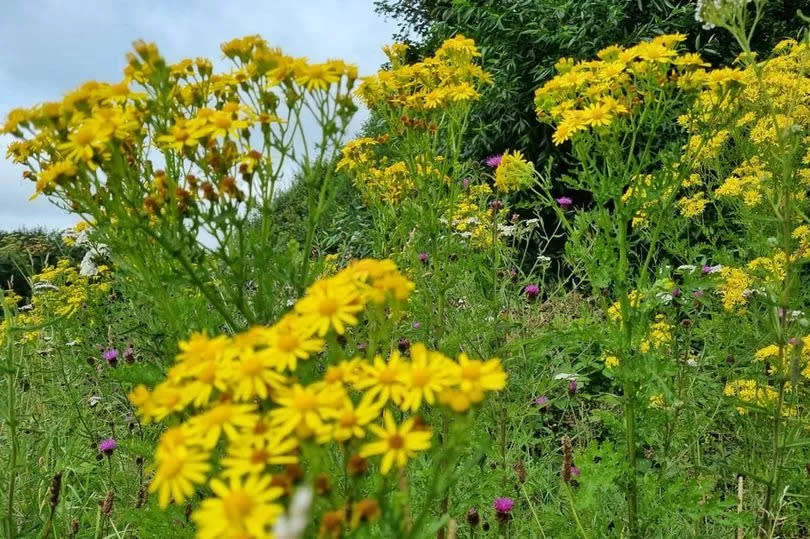Warning over 'extremely poisonous' plant invading UK gardens

A warning has been issued around an "extremely poisonous" invasive weed which may be growing on many people's properties.
Appearing as bright yellow flower heads, ragwort can be very dangerous, and a warning has been issued against removing the plants yourself. Instead, it is recommended that ragwort is handled by experienced people wearing full protective clothing and eradicated by weed control technicians, warns Japanese Knotweed Ltd and Environment Controls.
Ragwort can cause all sorts of problems, and is extremely poisonous to dogs, livestock and horses if ingested, even proving fatal in some cases. Stalks from the plant can often be mistaken for hay, or accidentally collected into grass cut for livestock or even horse feed.
Read More: Ilkley Lido under threat of closure as fight launched to save it
Dogs ingesting ragwort can lead to them being affected by serious liver damage. It even poses a health risk to humans and so should not be handled with bare hands.
Common ragwort is listed as one of the five injurious weeds under the Weeds Act 1959. They can grow up to three feet tall with clusters of bright yellow flowers.
Ragwort can be identified through a professional survey, or a free ID tool can be used here to send pictures of the plant to invasive plant experts.
Get all the latest and breaking news in Yorkshire by signing up to our newsletter here.
It is a legal requirement to remove ragwort if it is deemed to be causing issues for landowners, and it has a high risk of poisoning horses and livestock or spreading even further. More than 700 horse deaths due to the plant have been recorded due to ragwort since the Weeds Act, and the plant needs to be removed from areas with animals.
The plant contains pyrrolizidine alkaloids which can cause liver damage, even leading to death. It often dries out in Autumn as well, leading to it being included in hay and even the smallest amount of the plant ingested by an animal should be treated as an emergency.
Planned applications of herbicide are used to destroy the plant and using the right type of herbicide can prevent damage to surrounding plants such as grass. It can also be excavated mechanically or manually pulled up.
Biological control, making use of predators such as Cinnabar Moth Caterpillars, can also work as a solution as these insects will eat the plant. However, professional help is advised in destroying the plant.


 Yahoo News
Yahoo News 
